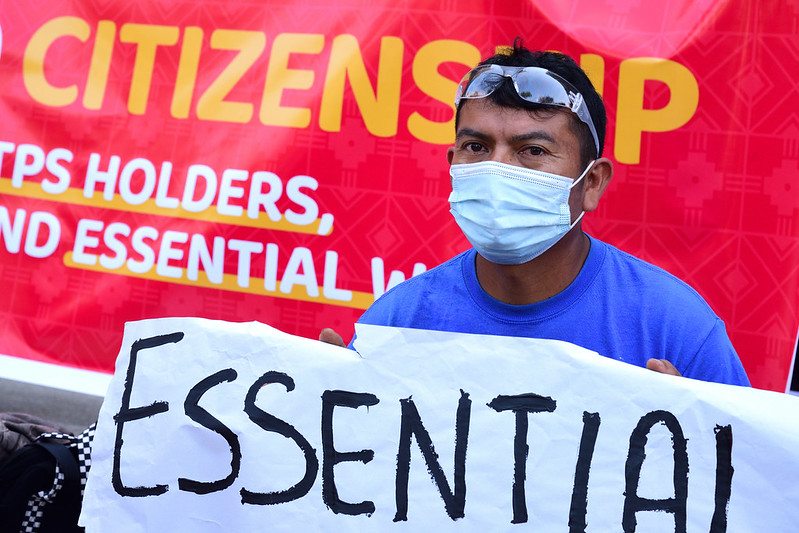2021 Budget Reconciliation Process Explainer

2021 Budget Reconciliation Package & A Pathway to Citizenship
What is the Budget Reconciliation Process?
For most bills to become law, they must go through passage in the Senate which requires 2/3 majority, unlike the simple majority in the House. In a divided, partisan Senate, the minority party is able to block bills using the Filibuster, an action designed to prolong debate and delay or prevent a vote on a bill, resolution, amendment, or other debatable question. However, there is one procedural tool that can get around this roadblock, called budget reconciliation.
Budget Reconciliation is a bill that can be brought to a vote and pass with simple majority, i.e., in the current Senate, without any Republican votes.
This tool generally comes up only once (sometimes twice) a year, as it is tied to an annual budget resolution. The majority party is able to use this tool to fold in any legislative measure into the package, as long as those measures are tied to budgetary matters —i.e. only policies that change spending or revenue can be included.
It has been used many times by both parties to pass legislation. It was designed to enable lawmakers to adjust spending or revenues to comply with a budget blueprint without supermajority support.
Steps to the Budget Reconciliation Process:
- The Senate drafts a budget resolution package, each committee submitting language finalizes their part of the package.
- Once a budget resolution is drafted by the Senate, the House takes up the bill.
- Once passed, the two chambers (House and Senate) finalize the language of the various provisions in the package.
- After the committees draft the legislation, the Senate Parliamentarian determines which pieces must be removed that do not pass the test as a fiscal matter. The Senate Parliamentarian is an advisor to the Senate on the rules, and is an unelected position.
The 2021 budget reconciliation bill has includes a number of spending measures: expanded federal health care and assistance, pre-K education programming, climate change mitigation programs, among others. The Democrats see this as the best opportunity to push through a pathway to citizenship, arguing the budgetary benefits of such a move.
So far, the Senate Parliamentarian has rejected two versions of Democrat’s proposals for pathways for citizenship. While her decisions are merely advisory, several Democratic senators have indicated they would be reluctant to overrule her.
Biden, Harris and Majority Leader Schumer can use their influence to press for several steps to ensure a pathway to citizenship is in this bill. Here are some legislative tools at their disposal:
-
Democrats can rework the legalization language and resubmit to the Parliamentarian
-
Vice President Harris can overrule the parliamentarian
-
The Senate leadership can fire the parliamentarian
-
Democrats can end the filibuster.
#CitizenshipforALL
